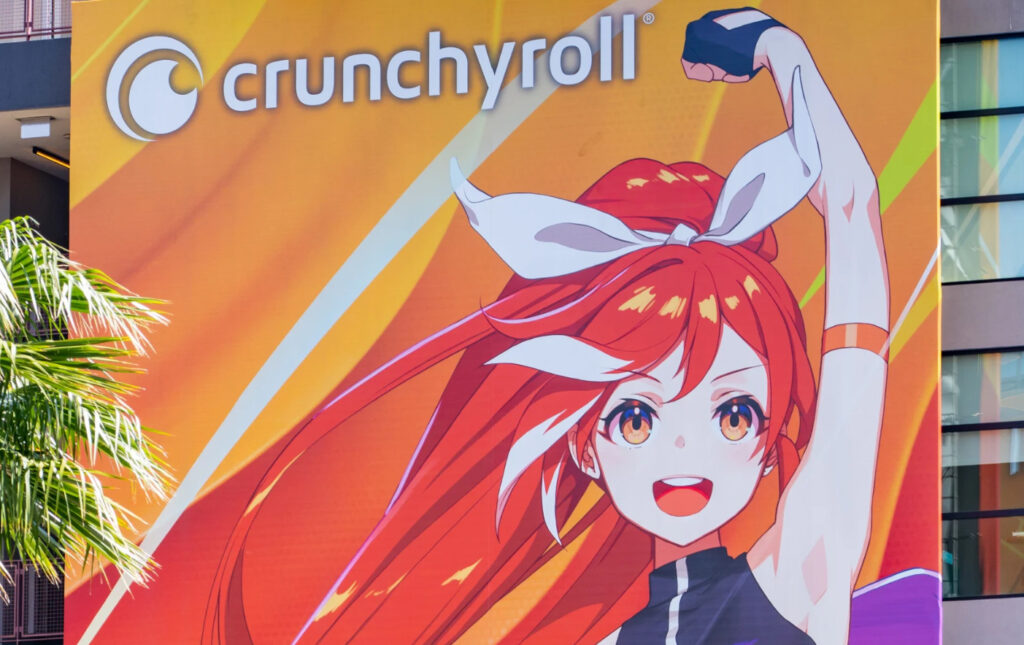Crunchyroll, the world’s leading streaming service for anime and manga content, has become synonymous with Japanese pop culture. With over a decade of history, this platform has not only helped anime fans access their favorite titles but has also played a pivotal role in spreading Japanese culture worldwide. From its humble beginnings to its expansive recent ventures, Crunchyroll offers much more than just anime streaming—it’s a cultural bridge connecting millions to the vibrant worlds of Japanese anime and manga.
The Humble Beginnings of Crunchyroll
Crunchyroll was founded in 2006 by a group of University of California, Berkeley graduates, initially as a platform for streaming East Asian media. At the time, it was a modest startup with a focus on fan-submitted content. The platform hosted a mix of officially licensed and unlicensed anime series, often uploaded by fans. This approach quickly attracted a growing community of anime enthusiasts looking for a centralized platform to enjoy their favorite shows.
By 2008, Crunchyroll made a significant pivot: it moved away from hosting unlicensed content and became an entirely legal streaming service. This transition was made possible through partnerships with major Japanese production companies, beginning with TV Tokyo, which provided the platform with popular titles like Naruto Shippuden. This decision not only legitimized Crunchyroll but also set the stage for its meteoric rise as a global anime leader.
How Crunchyroll Became a Global Powerhouse
Crunchyroll’s success lies in its ability to anticipate and adapt to market needs. In the early 2010s, anime was still considered a niche interest outside Japan. However, Crunchyroll recognized its potential as a global phenomenon and began expanding aggressively.
Licensing Agreements
Crunchyroll secured exclusive rights to stream some of the biggest anime titles, including Attack on Titan, One Piece, and My Hero Academia. These partnerships ensured that fans worldwide could access high-quality, legally subtitled episodes almost simultaneously with their Japanese release.
Simulcasting and Simulpubbing
A groundbreaking feature of Crunchyroll was its introduction of simulcasting for anime and simulpubbing for manga. This meant that episodes of shows and chapters of manga would be available to international audiences just hours after airing or publication in Japan. This eliminated the long wait times that previously plagued fans and contributed to the rise of anime’s global popularity.
Original Content
As streaming giants like Netflix began investing in original anime, Crunchyroll launched its own original programming under the banner “Crunchyroll Originals.” Titles like Tower of God and Onyx Equinox showcased their commitment to not only distributing but also creating compelling anime content.
Manga Partnerships
Crunchyroll Manga was introduced to bring Japanese titles to English-speaking audiences. By partnering with publishers like Kodansha and Shueisha, Crunchyroll provided fans with access to some of the most beloved manga series, including Attack on Titan and Fairy Tail. This initiative further strengthened Crunchyroll’s reputation as a one-stop shop for anime and manga.
Community Building
Crunchyroll fosters a sense of community among anime fans through forums, fan art contests, and events like Crunchyroll Expo, an annual convention that celebrates anime culture. This emphasis on community engagement has helped the platform cultivate a loyal following.
Acquisition by Sony
In 2021, Sony acquired Crunchyroll for $1.175 billion, merging it with Funimation, another leading anime platform. This consolidation created a powerhouse capable of delivering even more content to fans. The merger has already resulted in a larger library, improved streaming quality, and a unified subscription model.
Partnerships with Japanese Studios
Crunchyroll continues to deepen its relationships with Japanese studios, acting as a co-producer on new anime projects. This ensures that fans have access to exclusive and cutting-edge titles while supporting the Japanese anime industry.
Crunchyroll Games
Recognizing the overlap between anime fans and gamers, Crunchyroll launched Crunchyroll Games, a division dedicated to publishing anime-inspired mobile games. Titles like Princess Connect! Re: Dive and Grand Summoners have been popular among fans, offering an interactive way to engage with their favorite series.
Physical Media and Merchandising
Beyond streaming, Crunchyroll has expanded into physical media and merchandise. Fans can purchase Blu-rays, collectibles, and apparel directly from the Crunchyroll store, further cementing its role as a cultural hub for anime lovers.
Crunchyroll Theatrical
Crunchyroll’s theatrical arm has been bringing anime movies to the big screen, offering fans the chance to experience films like Demon Slayer: Mugen Train and Jujutsu Kaisen 0 in cinemas worldwide. This initiative has been instrumental in showcasing anime as a serious art form to mainstream audiences.
Helping People Engage with Anime and Manga
Crunchyroll isn’t just a streaming service; it’s a gateway for people to immerse themselves in Japanese culture. Here’s how it continues to engage fans:
Educational Content
Crunchyroll’s blog and social media platforms provide behind-the-scenes insights into the anime production process, interviews with creators, and cultural context for fans who want to deepen their understanding of Japanese media.
Events and Conventions
Crunchyroll Expo has become a major event for anime fans, featuring panels with voice actors, exclusive previews, and cosplay contests. These events help fans connect not only with anime but also with each other.
Diversity in Content
Crunchyroll offers an incredibly diverse range of titles, from action-packed shonen series to heartfelt slice-of-life dramas. This ensures that there’s something for everyone, whether you’re a seasoned otaku or a curious newcomer.
Localized Subtitles and Dubs
To reach a broader audience, Crunchyroll provides subtitles and dubbed versions in multiple languages. This accessibility has been critical in growing anime’s global appeal.
Challenges and Criticisms
While Crunchyroll has achieved incredible success, it hasn’t been without criticism. Some fans have expressed concerns about subscription prices, occasional streaming issues, and the impression of the Sony merger on competition. Additionally, as anime becomes more mainstream, there’s a risk of over-commercialization, which could dilute the essence of the medium.
Crunchyroll’s journey from a small startup to a global anime powerhouse is nothing short of remarkable. By providing high-quality, legal access to anime and manga, the platform has revolutionized how fans engage with Japanese media. Its recent expansions into gaming, merchandising, and theatrical releases show that Crunchyroll is not content to rest on its laurels.
As anime continues to grow in popularity, Crunchyroll will undoubtedly play a key role in shaping its future. With its commitment to innovation and community, it remains a vital bridge between Japanese culture and the world, ensuring that the magic of anime reaches as many people as possible.
No comments yet.







